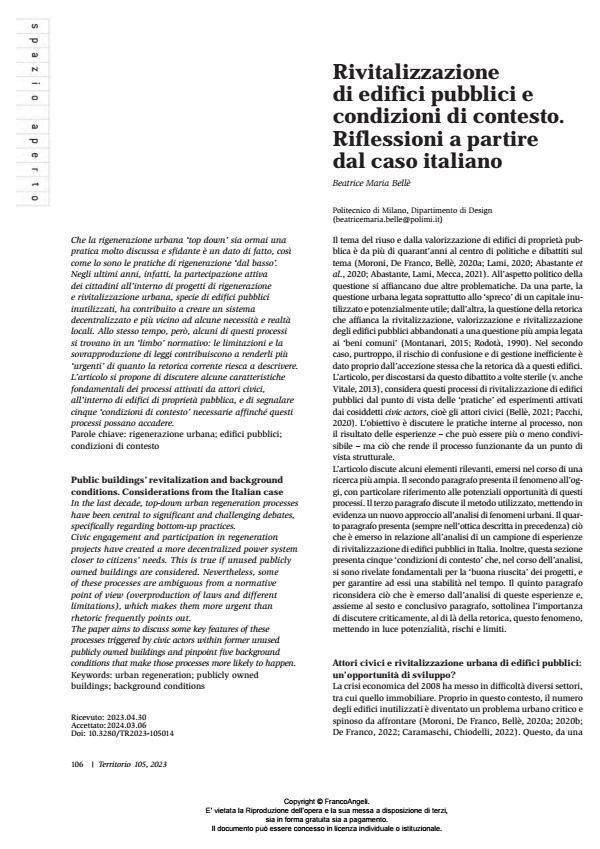Public buildings’ revitalization and background conditions. Considerations from the Italian case
Journal title TERRITORIO
Author/s Beatrice Maria Bellè
Publishing Year 2024 Issue 2023/105
Language Italian Pages 9 P. 106-114 File size 181 KB
DOI 10.3280/TR2023-105014
DOI is like a bar code for intellectual property: to have more infomation
click here
Below, you can see the article first page
If you want to buy this article in PDF format, you can do it, following the instructions to buy download credits

FrancoAngeli is member of Publishers International Linking Association, Inc (PILA), a not-for-profit association which run the CrossRef service enabling links to and from online scholarly content.
In the last decade, top-down urban regeneration processes have been central to significant and challenging debates, specifically regarding bottom-up practices. Civic engagement and participation in regeneration projects have created a more decentralized power system closer to citizens’ needs. This is true if unused publicly owned buildings are considered. Nevertheless, some of these processes are ambiguous from a normative point of view (overproduction of laws and different limitations), which makes them more urgent than rhetoric frequently points out. The paper aims to discuss some key features of these processes triggered by civic actors within former unused publicly owned buildings and pinpoint five background conditions that make those processes more likely to happen.
Keywords: urban regeneration; publicly owned buildings; background conditions
Beatrice Maria Bellè, Rivitalizzazione di edifici pubblici e condizioni di contesto. Riflessioni a partire dal caso italiano in "TERRITORIO" 105/2023, pp 106-114, DOI: 10.3280/TR2023-105014